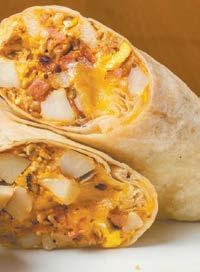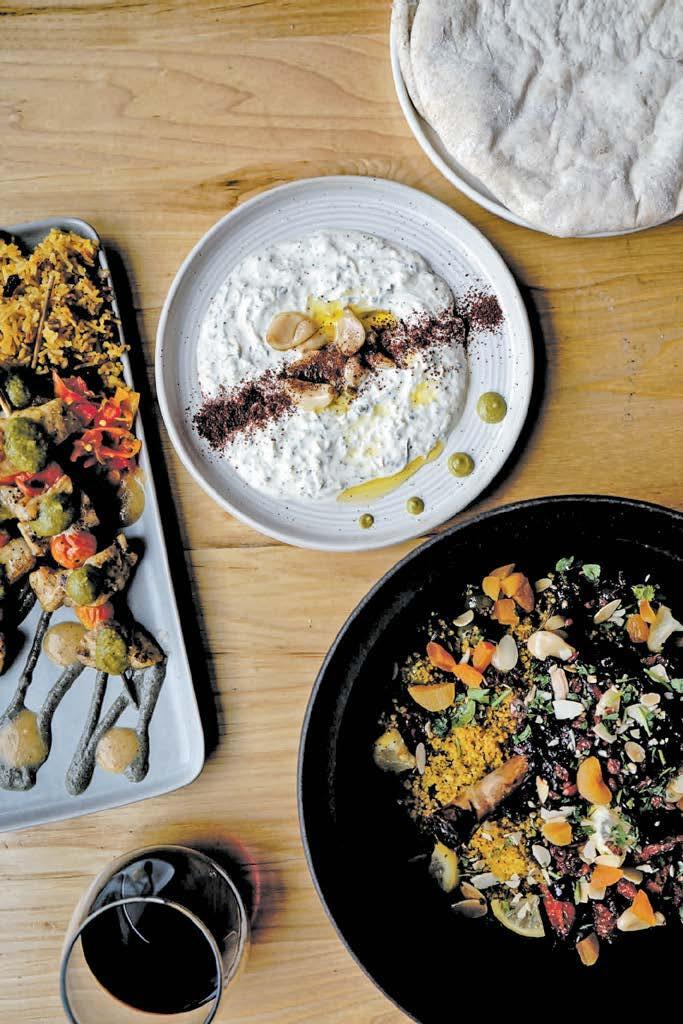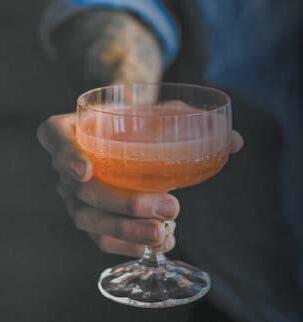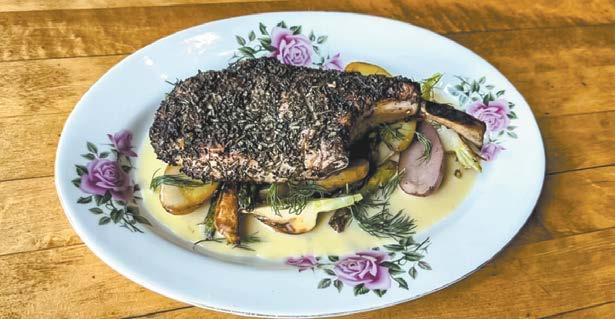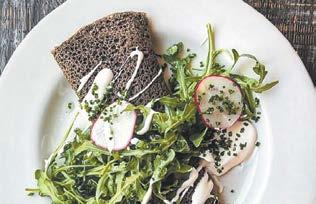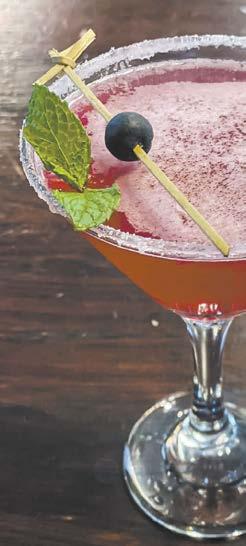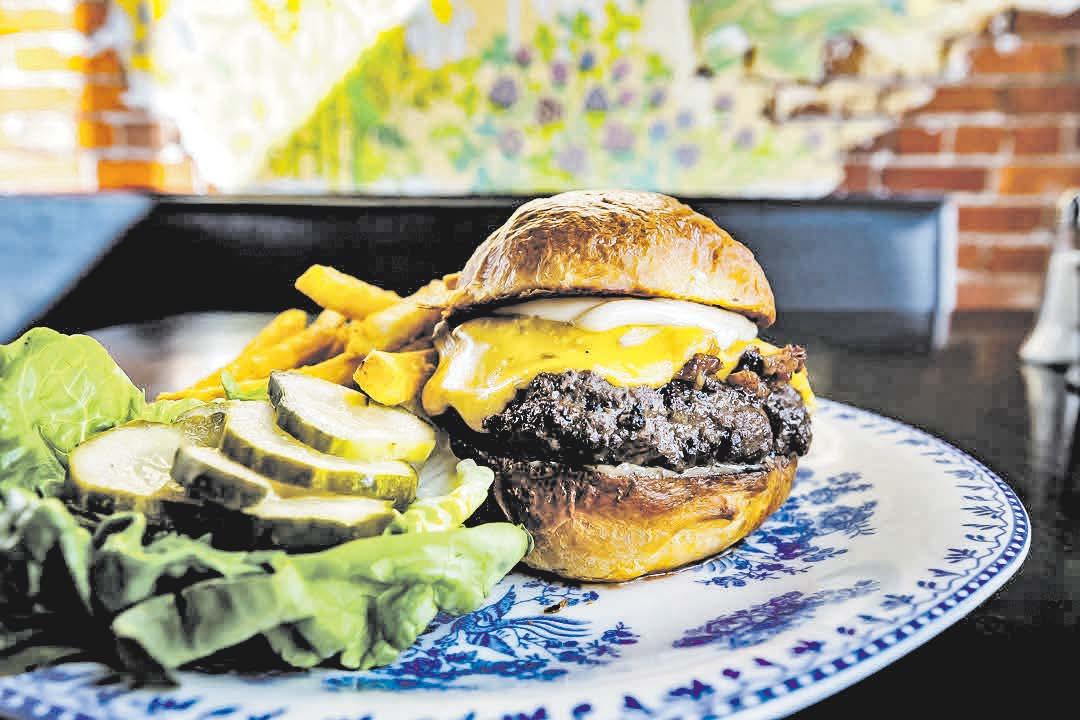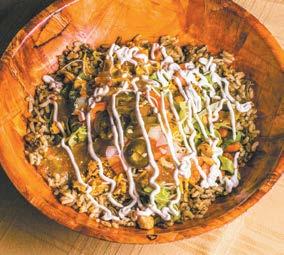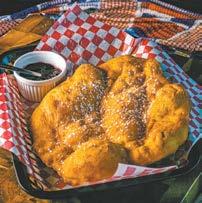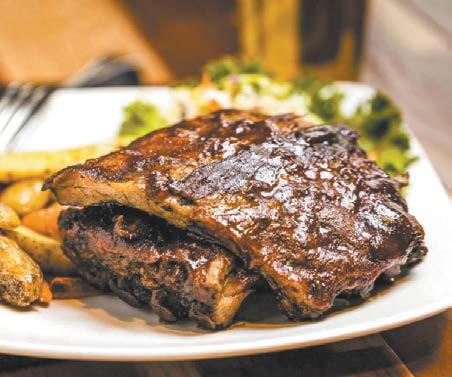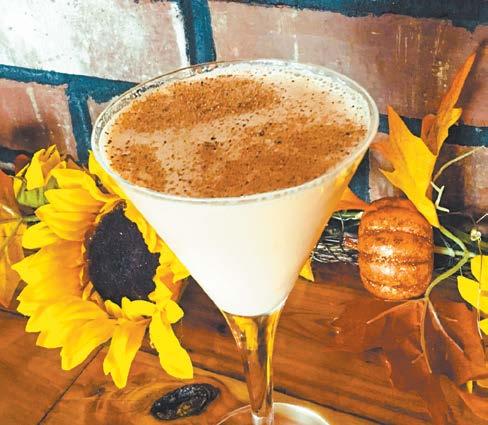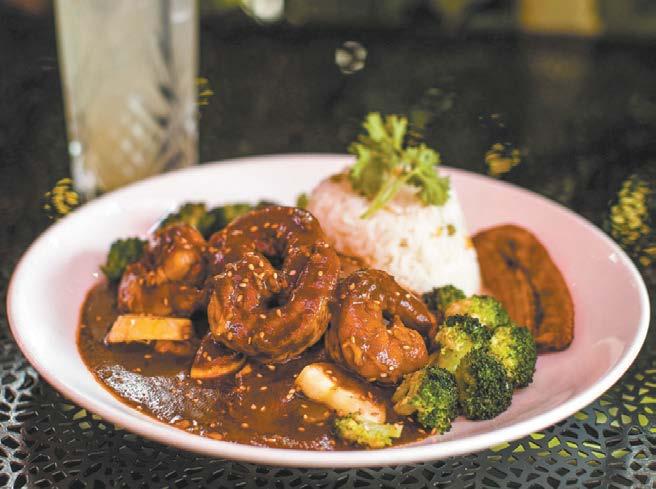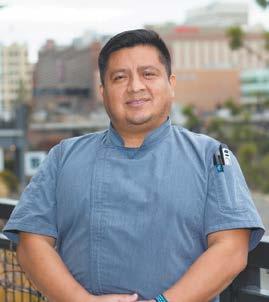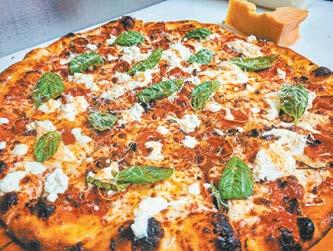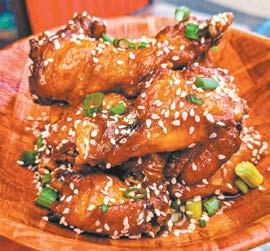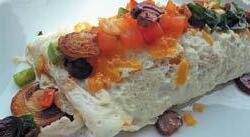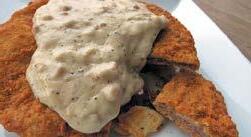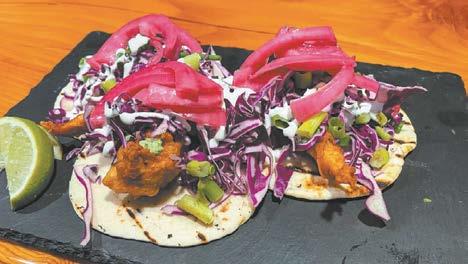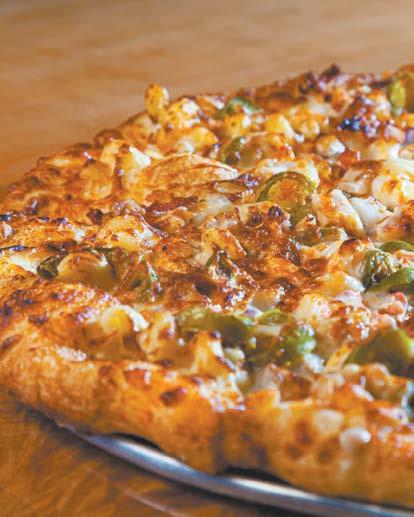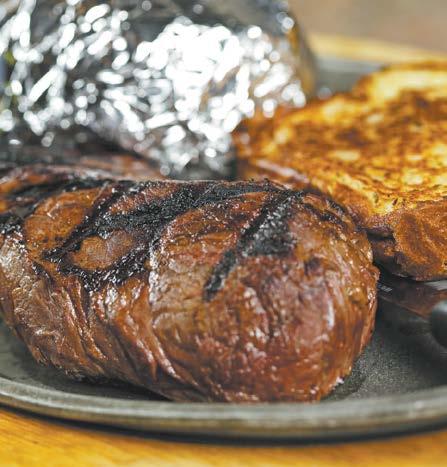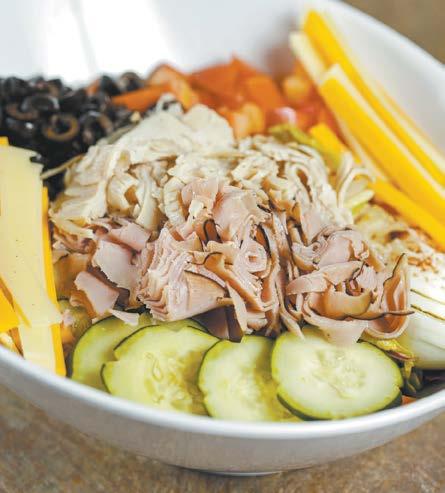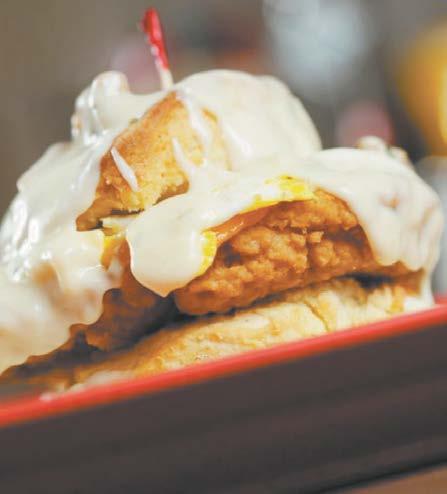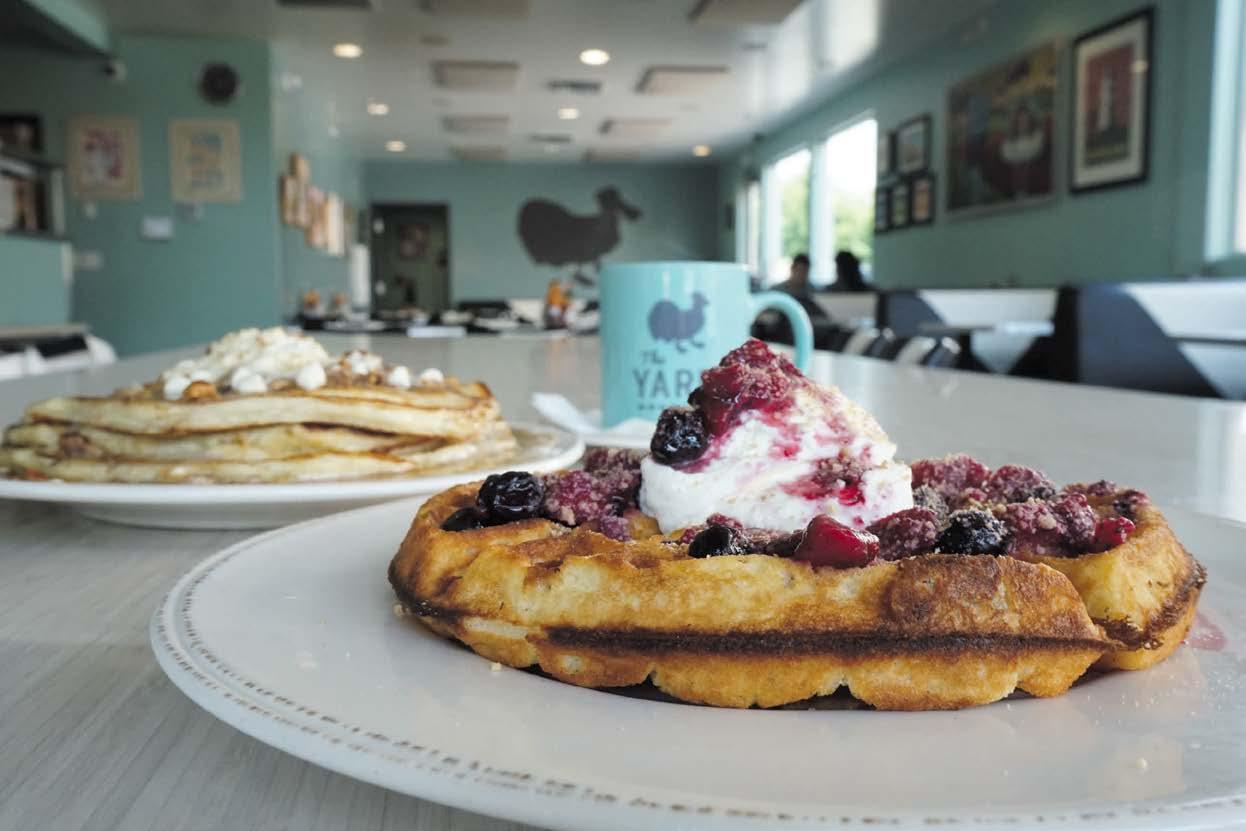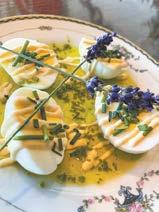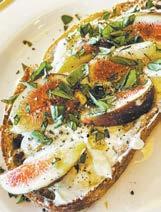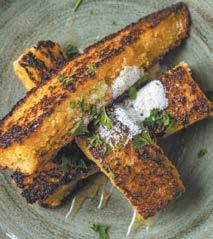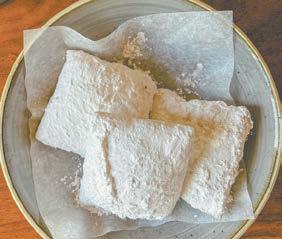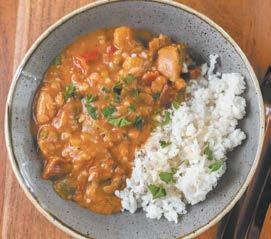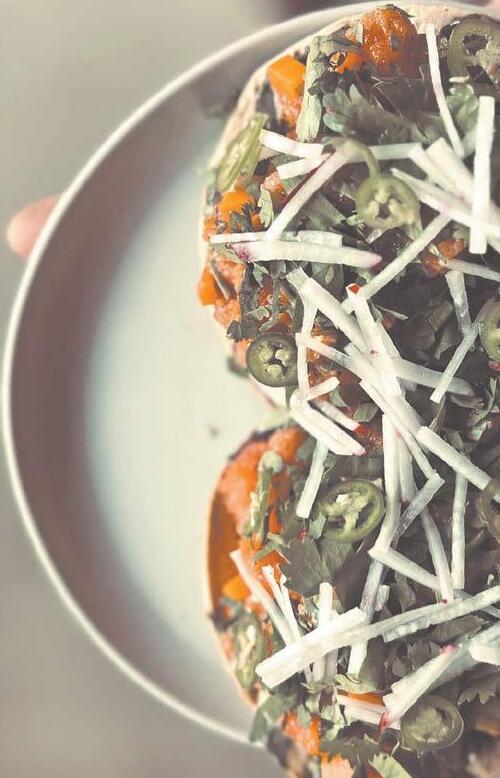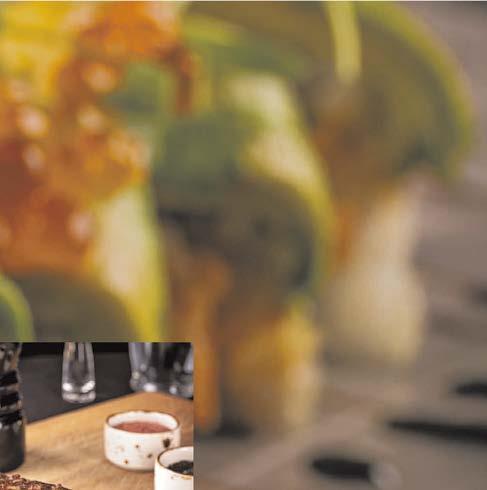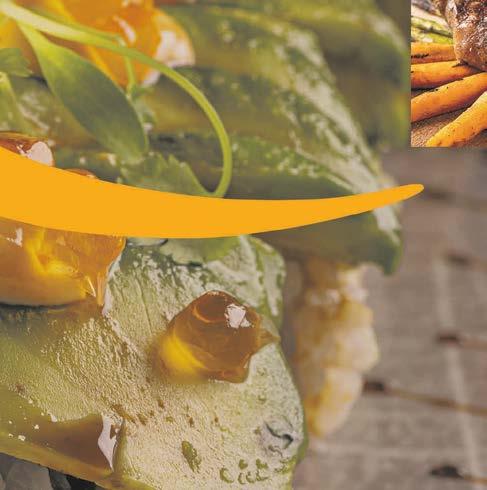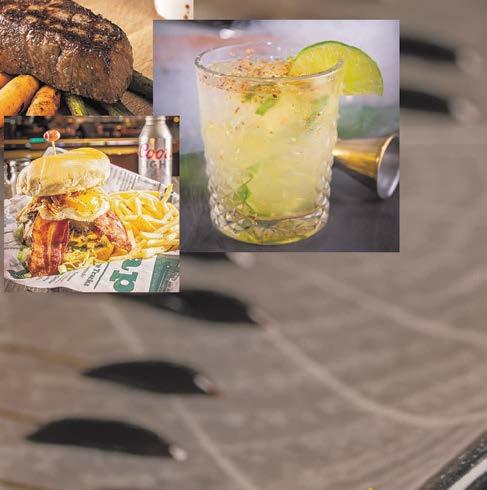









My mom is notoriously hard to take out to eat. She’s a homebody, so she doesn’t look forward to a night out. She’s also a pretty good cook, and she doesn’t dread dishes. So anytime I finally convince her to try a new dinner spot with me, I usually get the same response: It’s good, but why couldn’t I just do this at home?






This year’s Dining Out guide is an ode to dishes that are best not attempted at home. Some are intensely technical, others are way too time-consuming, and one calls for more ingredients than a typical grocery list.






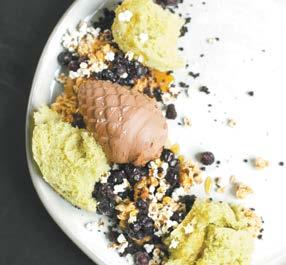

Let’s leave it to the professionals to simmer the perfect broth for hours on end or mold chocolate into pinecones or deep-fry hand-rolled sushi. Go ahead and taste the hard-earned fruit of someone else’s labor. Let the experts impress you with their most dramatic skills.


Besides the featured dishes, make sure to check out the list of recommendations from local chefs for dishes even they don’t want to make for themselves.






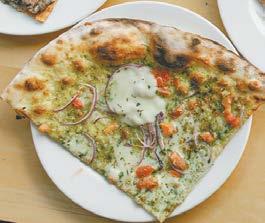


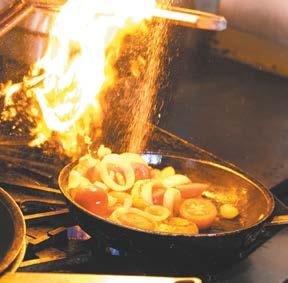
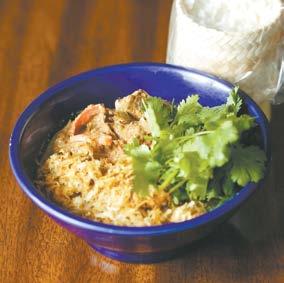
Here’s to memorable meals and impressive imaginations that are way beyond our skill level. This one’s for you, Mom.
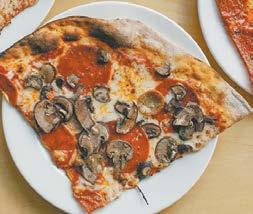 — ELIZA BILLINGHAM
— ELIZA BILLINGHAM





















Here’s how hard it is to make mole negro sauce: Most Mexican restaurants I’ve eaten at over the years totally suck at it.
Far from a simple savory Mexican chocolate sauce, mole should be a rich world of flavors bursting with smokey umami boldness, subtle sweetness, and pepper heat. Last year while in Sayulita, on Mexico’s west coast, I found a place that made such good mole tacos that I had to eat there five straight days. But when it’s done poorly, mole is a dish-ruining mess — a relatively bland cocoa concoction with no pep. If a restaurant isn’t committed to the authentic process, it’s just a
brownish/blackish gravy that turns your meal into sludge.
But fear not, Spokanites. The mole negro at Molé? It lives up to its name. It’s super legit.
And once you observe the amount of work that Molé owner and head chef Fredy Martinez puts into concocting traditional Oaxacan mole negro, you totally understand why.
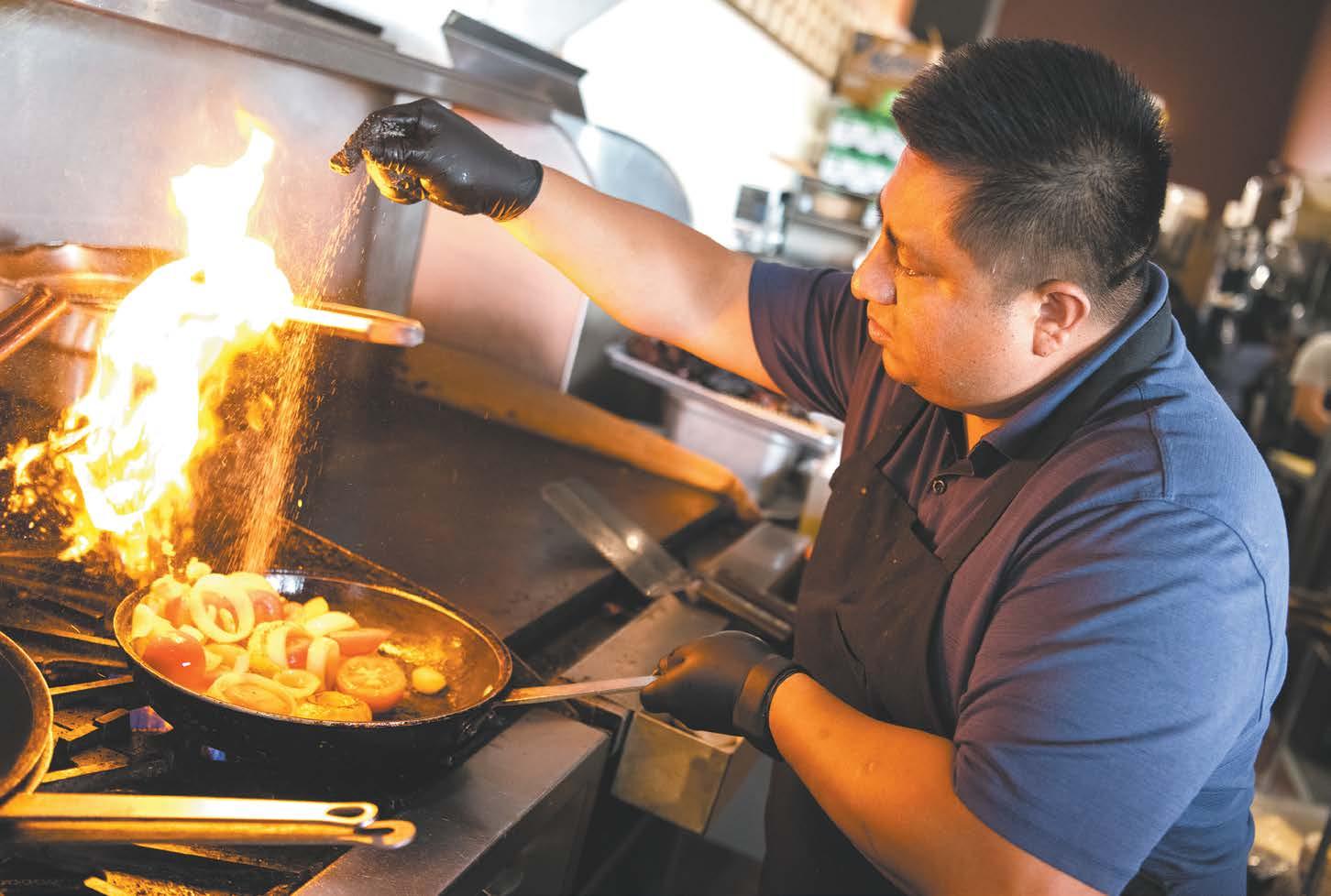
Molé’s mole-making process overwhelms with its prep list alone. Martinez brings out not one, not two, but four large trays filled with necessary ingredients. There’s a whole tray of just dried
peppers varieties: chile ancho, chile guajillo, chile costeño (native to Oaxaca) and chile puya. The recipe also includes cloves, black pepper, cinnamon sticks, Gamesa Marias (Mexican biscuit cookies), tomatoes, onions, garlic, plantains and more.
But the most crucial is the “pure, real deal” chocolate, which Martinez’s mother makes by hand with cocoa, cinnamon and sugar at home and dries in the sun before sending it to the restaurant. All this creates the mole paste, which then gets simmered with chicken broth for the actual sauce that’s plated on Molé dishes.





Turns out, Martinez is cooking up a small batch of mole paste for demonstration. This abundance will only create 2 kilos of mole negro paste. The typical four-hour process — often overseen and executed by Martinez’s wife, Ana, in the morning hours before the restaurant opens — makes roughly 10 times as much. Molé goes through about 20 kilos of mole paste — 100 gallons of sauce — per week
Martinez begins the process by throwing the various peppers on the grill, toasting them to a burn to get the blackness and smokey flavor notes. Soon cinnamon sticks get added to the grill mix, while in a separate pan he begins to stir fry garlic, onion, tomato, and eventually plantains, walnuts and almonds. Once this smorgasbord of ingredients gets done cooking, they are all blended together to make that quasi-magical mole negro paste.
As someone who learned how to make mole in the traditional manner from the matriarchs in his family, Martinez thinks restaurants that get mole wrong usually simply aren’t putting in the effort.
“Just follow to process how it’s supposed to be,” he says. “Some people just go the easy way. Instead of stir frying and toasting, they just soak everything in hot water and just blend everything. And that is not the way.”
The signature sauce is healthily ladeled across a variety of dishes at Molé. On this occasion I indulge in the signature dish — mole negro over bone-in chicken ($25). The dish may seem straightforward — a heaping helping of chicken over a bed of rice with a plantain slice on the side.
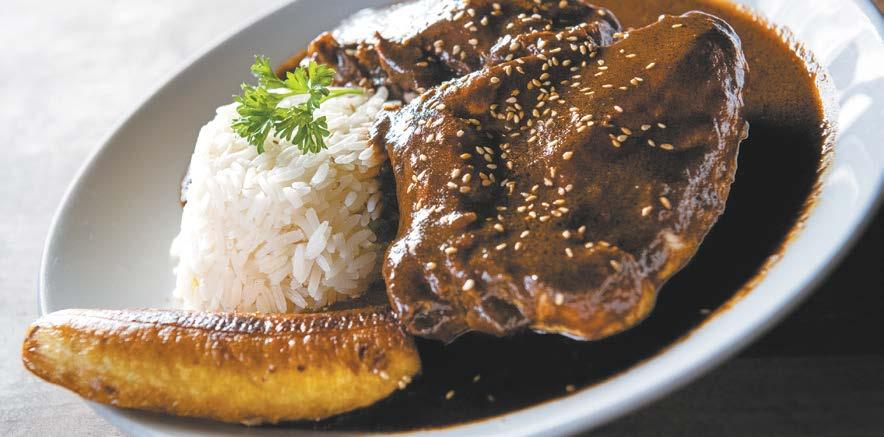
But the mole is the complexity. When smothered over the chicken, the dish becomes a rich blast of flavors that put to shame any condescending jibes about Mexican food being a simple mixing of core ingredients. It’s a
some tough questions. Do I have the massive kitchen space to pull this off properly? Am I willing to put in the effort to go through all the steps? Do I have generations of Oaxaca cooking heritage to draw upon while cook-

MOLÉ!,” CONTINUED...
Thank you for dining local.

Visitors spent $393M on Food & Beverage in 2022. That’s 28% of all visitor spending in Spokane in 2022.


Beef rendang takes nearly two days to make and originated in Indonesia, but d’bali Asian Bistro has brought its complex flavors to Airway Heights
 BY MADISON PEARSON
BY MADISON PEARSON
At d’bali Asian Bistro, it’s always been about hard work.
Born and raised in South Korea, owner Jeannie Choi (affectionately known as Mama Jeannie) says she’s always had a metaphorical appetite for travel and a literal appetite for diverse cuisine. After traveling around Southeast Asia in her 20s, Choi found herself in Spokane working a tough job and wondering where life would lead her next.
“She was always cooking for friends and family at her house in addition to working all of the time,” says Kelly Bishop, Choi’s business partner. “We kept telling her it was time for her to do something for herself.”
Following that gentle nudge, Choi opened d’bali Asian Bistro in October 2018. She’s been bringing the complex flavors of Southeast Asia to the West Plains ever since.
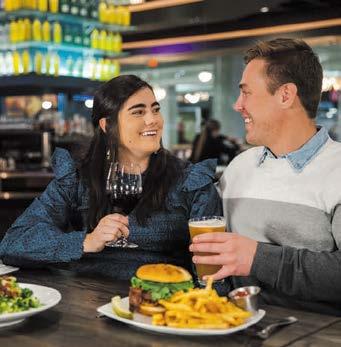
With d’bali, Choi struck a balance between her love of food and her obsession with travel, which is clearest in her Sumatran beef rendang ($18). At first glance, the rendang looks like any other curry-style dish. But when it hits your tastebuds, it’s clear the dish is something far more elusive.
Rendang hails from the Minangkabau people native to the West Sumatra province of Indonesia. Much like Choi, rendang began in one place and ended up in many others.
“The early trade that happened in the region of Southeast Asia impacted this dish heavily,” Bishop says. “Over time, the introduction of new people and cultures resulted in people taking on the dish and making it their own.”
Beginning as a dried beef product, the dish is now a stew-like amalgamation of intense flavors and a comfort food for people all over the world.
Rendang is created by marinating a piece of tender beef in a blend of aromatic spices. Choi uses everything from cardamom, cinnamon and star anise to fresh ingredients like lemongrass, ginger, garlic and galangal, a spice with forward-facing notes of mustard and pine.
Choi says it’s difficult to find fresh ingredients in the Inland Northwest, so she often makes trips to the state’s west side, even for just one ingredient. Anything for her customers, the “d’bali Fam Bam,” as Choi and Bishop call them.


“Traditionally, the spices were pounded together to create the marinade,” says Choi, though she admits they have a blender now. Once the spices are combined, the meat is covered in the mixture and left to marinate for 24 hours, even up to 36 hours. At minimum.
D’bali’s version of rendang has just enough sauce to seep into the warm rice, while the coconut cream gives an undertone of sweetness, and the marinade spices surface more and more with every bite.
“When all of these flavors are mixed together, it’s not overwhelming,” Choi says.
Although it takes nearly two days to make one batch, the dish is a mainstay on the menu. Choi’s perfected rendang is a combination of her experiences, expert knowledge and love of cooking. That’s evident in the flavors only she can create.
“Rendang is a road map of sorts, from Southeast Asia all the way to the Inland Northwest. That’s what makes this dish so culturally significant,” Bishop says. “It ties together many different ethnic groups and cultures to where we’re all just one people.”
Choi sums it up best: “Rendang is like a peaceful community.” n

Head down the stairs to Coeur d’Alene’s Kaiju and enter a latenight sushi spot that’s half North Idaho, half lower Manhattan. Local artists’ renditions of Japanese monsters hang on the walls. A seat at the low lit, high top sushi bar lets you watch how the rolls get made. A full service liquor bar with a lengthy list of sakes offers another round after the bars close but before you want to head to bed.
In the middle of the basement, Phaedra Ciccone wets her knife. At 22, she’s already the executive chef of Kaiju. She’s the daughter of Frank Ciccone, who owns Kaiju and the neighboring restaurant Crickets, and she’s been honing her sushi skills since she was 14. The quick, confident slice of her knife makes it look easy. But her years of practice prove it’s anything but.
The King Kong roll ($19) isn’t the most technical roll on the menu. It’s not topped with filet mignon seared by a blowtorch like the Hedorah ($22) or with expertly cut fish like the Manda ($21) or the more traditional nigiri or sashimi bites. But it’s a beast that shouldn’t be unleashed on a weeknight at home.

Don’t mess around in Coeur d’Alene with Kaiju’s deep-fried, banned-in-Japan King Kong rollThe perfect amount of escolar. YOUNG KWAK PHOTOS
The King Kong features escolar, which is also called Oilfish, White Fish, White Tuna or Hawaiian Butter Fish. Escolar gets its nicknames from its high concentrations of fatty, waxy esters that make it absolutely delicious and potentially hazardous — which is why it’s banned in Japan and Italy.
Eat it in small amounts, and you’ll be delighted — creamy, rich, and almost devoid of that “fishy” flavor. But eat any more than 6 ounces, and all that indigestible wax has to come out somewhere. You may discover why Hawaiians have another name for this fish — Maku’u — which means “exploding intestines.”
For Kaiju’s King Kong roll, Ciccone layers escolar with cream cheese, flying fish roe, crunchy green housemade slaw and bright orange yama gobo, a traditional Japanese pickled root vegetable. To showcase texture and technique even more, Ciccone deep fries the whole roll. She drips extra tempura batter while the roll is submerged to give it extra flake.
Topping off the extravagance, she drizzles the hot, crispy roll not only with sriracha and spicy mayo, but also huckleberry honey, for an epic battle between sweet and spicy. Long strips of dried seaweed make it look “furry,” Ciccone says. It’s as intimidating as the giant gorilla himself.
At first bite, it’s hard for me to distinguish between the escolar and cream cheese. Some chefs might consider this fried roll an insult to the pure ideals of sushi, but I’m too distracted by the sweet, spicy and sultry taking turns on my tongue. Punches of nori and fish eggs play nicely with the creamy base. I can see why escolar shows up on just about every American sushi menu. This country has a love affair with fats and fried things, and tonight, I’m here for it.

If you’re getting bored by repetitive meals and cookie cutter menus, Kaiju is the place to get inspired. Each house original roll is crafted for flavor, aesthetics and surprises.
“You’d think after eight years I’d get tired of eating it,” Ciccone says. “But honestly, I haven’t because I just make new stuff all the time.”
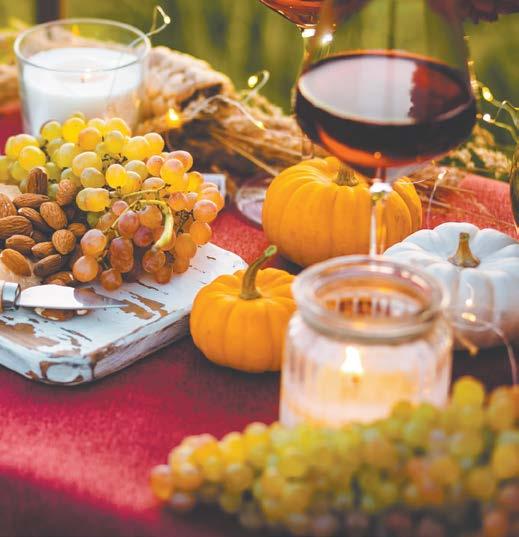

Ciccone has made Super Bowl-themed sushi with buffalo wings and celery sticks. The M.O.G.U.E.R.A. roll pairs smoked salmon with Fuji apple and fried feta ($15). Ciccone even custom created the Mothra ($18), an umamipacked vegetarian roll with jalapeño and sweet chili sauce, for a regular who was discouraged by bland veggie options everywhere else.
So anytime you feel yourself falling prey to the fatigue of familiar flavors, treat yourself to a night of sea monsters and Kaiju’s monster creativity.


And definitely don’t keep escolar in your freezer. That would be far too dangerous. n



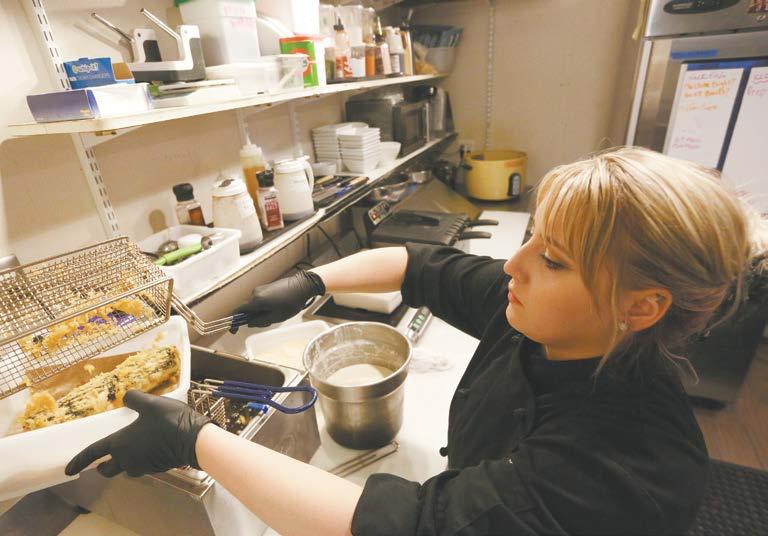
andwiched between Hop Chaos Brewing Co. and Mac Daddy’s in North Spokane is a little bit of Mexico City. Los Habaneros, a family-owned taqueria, has colorful flags with intricate cutout designs — papel picado — hanging in rows from the ceiling and mariachi music filling the air.
Raul Vega, co-owner and lead chef of Los Habaneros, has been cooking since he was a kid in Ciudad de México, where he was surrounded by taquerias selling authentic tacos, tortas and sopas.
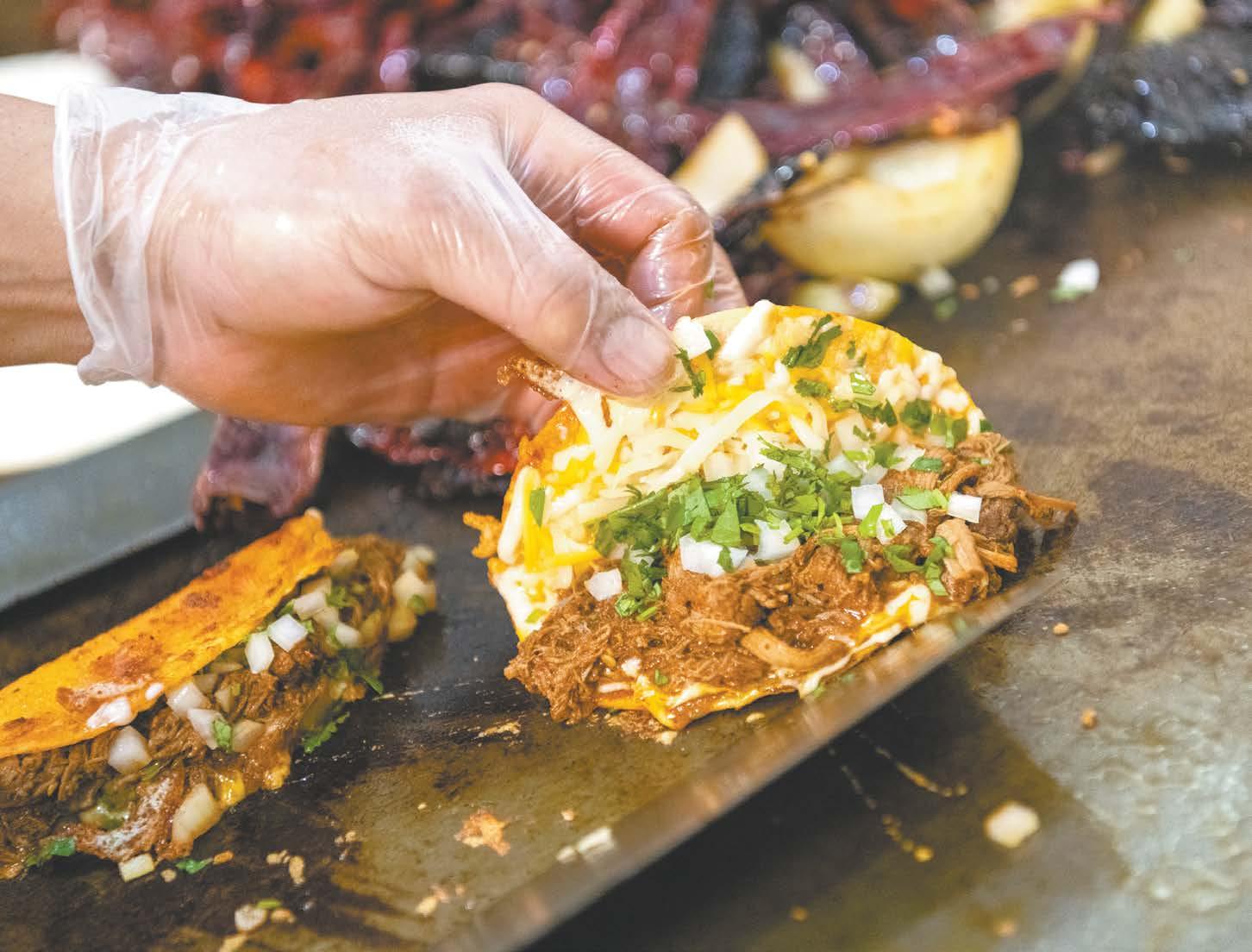
Vega moved to the U.S. when he was 14 and began working in the restaurant industry, from Florida to California. However, both states boast large Hispanic populations — something he says the Northwest was lacking.
“When I came over here I never found really good Mexican food, and I didn’t see much Hispanic population either,” Vega says. “That’s when I was thinking we should make a taqueria here so we can offer good options for people.”
 BY COLTON RASANEN
BY COLTON RASANEN
And that’s exactly what he did. Vega brought over all of his favorite traditional foods to Los Habaneros’ menu — even the most complicated and time-consuming recipes.
One of these dishes — birria — requires much more time than others. Vega dedicates more than five hours to boiling the beef that makes the dish. Luckily, he has his recipe — or, we should say, his mother’s recipe — down to a science.
Habaneros’ birria takes hours to make and combines Mexican history, family tradition and cultural legendAbout 36 hours later, birria tacos. ERICK DOXEY PHOTOS
Most of the food he cooks at his restaurant comes directly from his mom’s cookbook, which adds another layer of tradition to his craft.

“She loves to cook,” he says. “When she heard I was going to have a restaurant she was so excited.”

There may be familial meaning to the recipes he uses, but like many traditional foods, the history spans generations. For example, birria hasn’t always been made with beef.

The dish actually started out as a way to cook goat meat. While legends say that this is because some goats got cooked to perfection in a cave after a volcanic eruption, the more plausible reason leads back to the Spaniards.
Goats were brought from Spain to Mexico more than 500 years ago and integrated into the Mexican livestock system, according to research from the U.S. National Institutes of Health. Historical accounts say that the Spaniards thought goat meat was too tough to eat, and relegated it to the Indigenous population.
While the latter is more probable, it’s easy to imagine how a volcano inspired the juicy, flavor-explosion beef melting in my mouth right now.

While Vega wouldn’t reveal everything about his top-secret recipe, he did share an overview of his birria process.
First, he grills peppers — guajillo and ancho — with onions, garlic and tomatoes, then he boils all the veggies in water. Eventually, Vega blends the mixture and adds seasonings like cumin, cinnamon, thyme and black pepper to create the perfect broth.

Once that’s ready, he boils the meat, usually beef ribs, top round or skirt steak, in the broth for five hours to let the meat become as tender and marinated as possible. However, instead of spending hours each day to prepare the dish, Vega makes a large batch every other week that weighs more than 80 pounds.
Leave it to chefs and powerlifters to manage this much scrumptious food. Get a manageable portion for yourself served as a stew, a taco or a quesadilla, with onions, cilantro, lime and extra broth on the side.

Regardless of how you eat it, you’ll be joining a celebration bigger than yourself. This birria is the perfect dish to celebrate Vega’s one-year anniversary since opening the restaurant. So, we say: ¡Feliz cumpleaños, Los Habaneros! n
Los Habaneros • 10115 N. Newport Hwy. • Open every day 11 am-9 pm • 509-315-9001

Wanna know what even the professionals don’t want to make at home? Check out these recommendations from local chefs for dishes they think are impressive and exhausting, both at their own restaurants and other establishments around Spokane.

 — ELIZA BILLINGHAM
— ELIZA BILLINGHAM







Cochinito
• Ceviche-style Ahi & Watermelon ‘Tartar’ at Cochinito.
• Pork Dumplings and Mapo Tofu at Gordy’s Sichuan Cafe. “So much technique goes into the food at Gordy’s. I am certain that if you gave most of us the same ingredients and the recipe for that tofu, it still would somehow never come out the same. There is some magic at play here.”
Peter Froese



Gander & Ryegrass


• Brie ice cream by Austin Conklin, chef de cuisine of Zona Blanca.

Juli Norris
Kasa

• Mi Mi Sandwich (with bread baked fresh for every order) at Kasa.
• Kuni’s Grilled Pork at KUNI’S Thai Cuisine. “Chef Kuni makes the best Thai food in Spokane!”
Chad White

Zona Blanca and TT’s Barbecue
• Half Roasted Octopus at Zona Blanca.
• Okonomiyaki (Japanese savory pancake) at Ruins.
• The Fancy Nancy handmade meat pies at Heritage Bar and Kitchen.


• Fried Bologna at Durkin’s Liquor Bar.
Dan Gonzalez
Kismet

• Elote at Kismet because “the production and cooking is a bit dangerous, like putting popcorn in a fryer.”
• Ribeye Poke at Outsider.
Bethe Bowman
Italia Trattoria
• Squid Ink Fettucine at Italia Trattoria.
• Pho at Vina Asian Restaurant because “it’s a time-consuming broth” that uses six cuts of beef



Elijah Crume











Wild Sage
• Duck Duck Goose at Wild Sage. “Any time you see things like foie gras, pâté or cassoulet on menus — these are all time consuming and a hassle to make at home. Also, fried foods, because who wants to deal with vats of hot oil in their own kitchen?”
The Davenport hotels


• Elk Tartare at Table 13. “This dish will be featured at our Oct. 5 Fall Foraged Spiceology Dinner at Table 13. We will also feature this dish as a special for the remainder of October. We procure our wild game meat from a curated and trusted source, ensuring ultimate freshness in a closed cold chain from ‘shot to chef.’ Truly wild game meat is incredibly difficult to come by. Before serving it raw, a lab probe for microorganisms needs to be taken to be safe.”
Shaun Ratty

Bowery

• Chicken Ballotine at Bowery. (Which is coming this December and entails a two-day process using every part of a chicken. The breast is deboned and flattened, then stuffed with a sausage made from the thighs and spices, then rolled up and sliced into perfect circles.)
• Pasta Tasting Menu at Gander & Ryegrass (Homemade sfoglia rolled by hand).

Adam Hegsted

Eat Good Group (Baba, Republic Tap House + Kitchen, Francaise and more)






• Broasted Chicken Dinner at Park Inn Bar & Grill, because “fried chicken is such a mess and so much work.” Plus, who has a broaster (steamer/roaster

Ian Wingate
Outsider



• Rotisserie Cauliflower at Outsider.

• Taco Whettos (made with beef cheek barbacoa) at Kismet.
Lauren Blumenthal

Sorella




• Dante’s Meatballs at Sorella, because “although meatballs may seem very simple to most people, this 100-year-old recipe is extremely hard to beat.”

• Polenta Lasagna at Italia Trattoria. “It’s so unique and delicious in the most simple and comforting way.”
Almaz Ainuu Queen of Sheba

• Meat & Veggie Combination
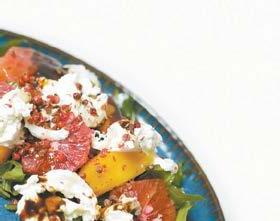


Plate at Queen of Sheba, made from scratch with traditional Ethiopian spices. n
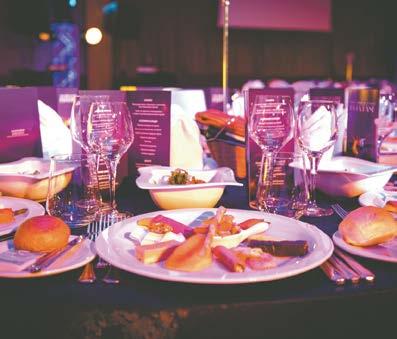

Experimental, whimsical and intricate. That’s the essence of chef Chong Vang’s sweet and slightly savory dessert creations at Inland Pacific Kitchen in downtown Spokane, especially his rich and herbaceous fall menu item “What We Do in the Forest” ($14), which literally looks like the forest floor.
“A lot of what we do here is very artistic,” he says of Inland Pacific Kitchen’s menu. “We try to do things that excite us and that we aren’t seeing in the community here, but we’re trying to just have fun.”
This season’s dessert is Vang’s play on a mousse, which in this case is molded and frozen into the shape of a pine cone. He says the recipe is pretty traditional, but he doesn’t add gelatin. Instead, he cooks the sugar to a certain temperature before adding it to the mousse, which allows it to hold its shape. The whole process takes two days to complete.
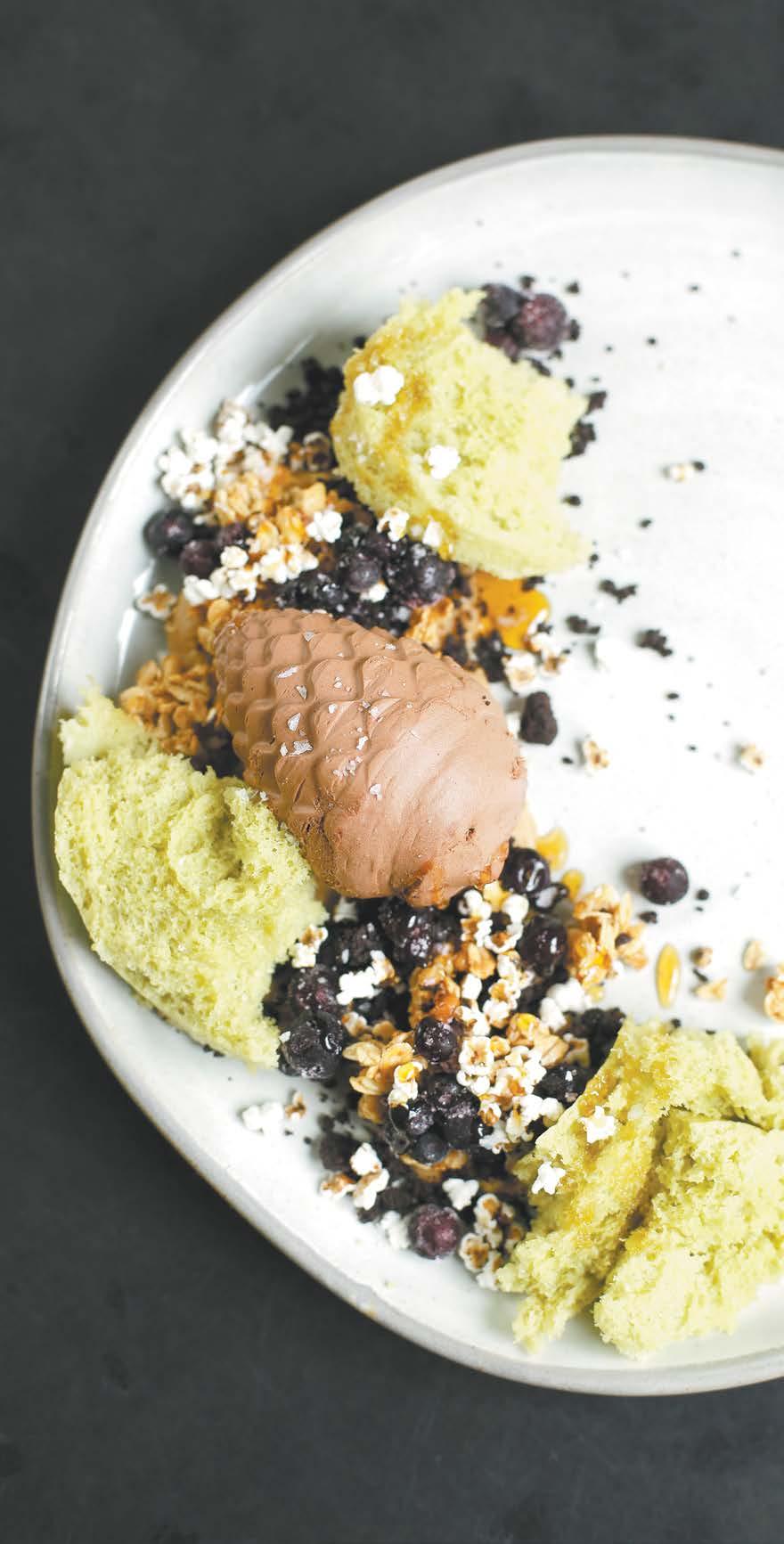
Surrounding the mousse is an eye-catching light green sponge cake that gets its hue from a mixture of blanched basil and milk that’s incorporated into the cake batter.
Overall, each component of the dish is relatively simple to make, says Vang. Yet it’s the combination of flavors and textures, plus the time and equipment he uses that add layers of complexity to the dish.
Take the basil cake batter, which is siphoned out of a whipped cream dispenser (or iSi canister) to make it more airy and moist than your traditional sponge cake. Successfully using an iSi canister takes trial and error for most.
“I’ve never made an iSi cake before, so it was an experiment for me,” says Vang. “It’s a little bit more unique — just a flavor that you wouldn’t expect in a cake.”
Beneath the cake and mousse sits a layer of a graham cracker butter that’s inspired by a Trader Joe’s cookie butter spread.
Vang tops that with his pine nut granola and then a chocolate “soil” — a cocoa and coffee flavored crumble that bakes for an hour on a lower temperature so it will slowly dehydrate without burning. He then sprinkles a layer of popped sorghum atop the soil, adding an extra layer of texture to the dessert.

“You have all those components to create this whole experience while you’re eating it,” he says, “like the crunchiness of the granola and then the uniqueness of the pine nuts that are in that granola, as well as the graham cracker butter, which adds a richness and kind of gives it that feeling of fall.”
He adds some frozen huckleberries, which will remain in the dish for as long as he can buy them. The berries are coated with sugar and citric acid to cut through the bitter notes in the mousse and chocolate soil.
As a final touch, he takes some flaked salt and a pine needle infused honey — which he infuses himself with hand-picked pine needles — and drizzles it over top.

“I kind of like that controlled chaos look,” he says. “It looks kind of messy, but everything is there for a reason and a purpose.”
The visual component of “What We Do in the Forest” was the primary driving force behind Vang’s concept, but he adds that his love of huckleberry cordials and nostalgic fall flavors, particularly that of s’mores, were equally impactful components of his creative process.
To Vang, it’s a careful, complex balancing act to merge the flavors and textures of his dish together in a cohesive way. But that’s a challenge he enjoys taking on.
“I think that dessert is meant to be playful,” Vang says. “It’s my way of just having fun and expressing myself.” n
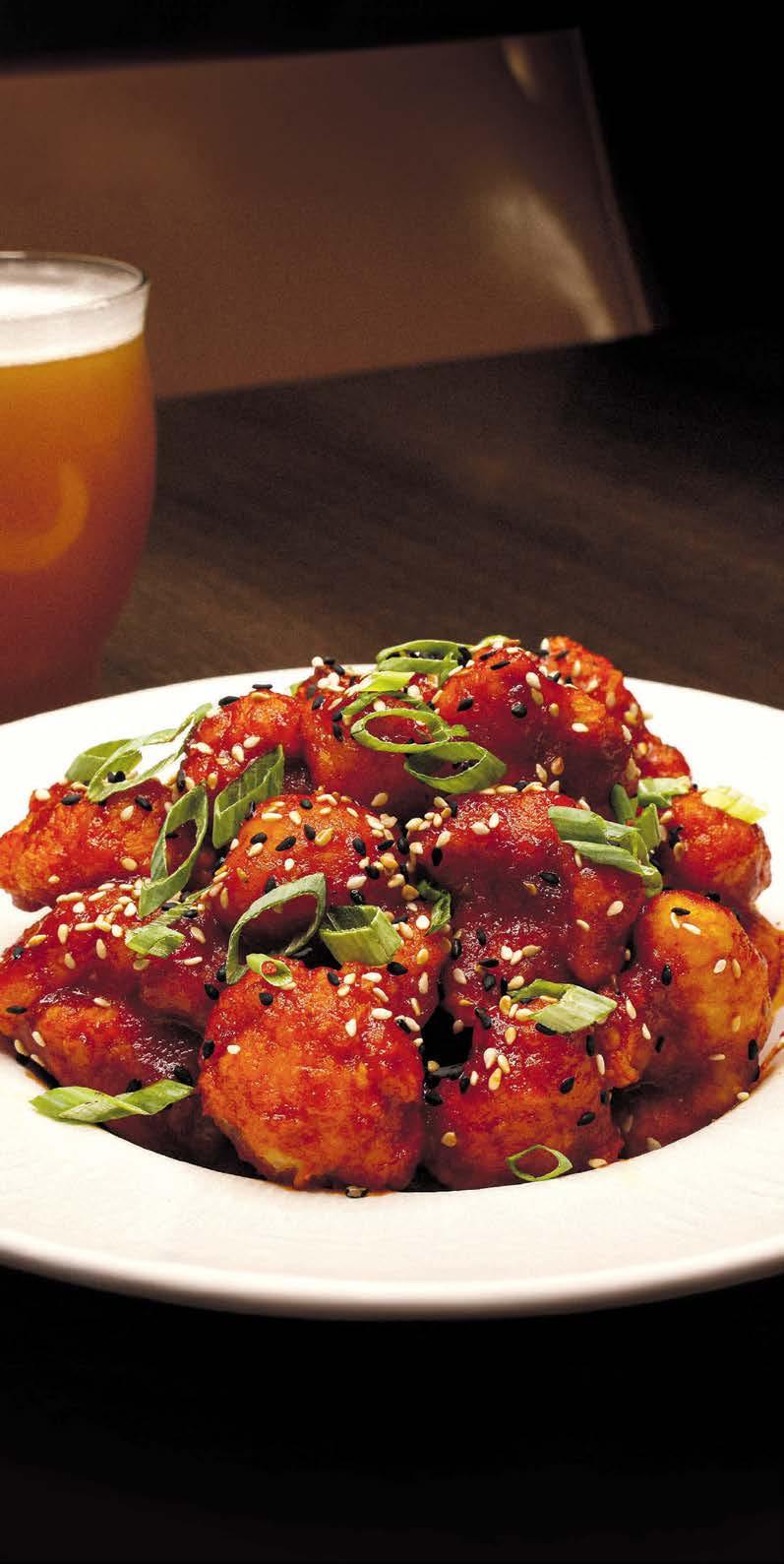
If you’re looking for something to level up your cocktail experience, the missing ingredient just might be milk.
DeAndra Perrigo, a veteran bartender at Bijou, spent six months perfecting her milk punch recipe. It’s a timeconsuming, finicky process that mixes spirits, spices, fruit and tea with milk. The milk curdles from the acid, and over hours (or days), all the astringent tannins stick to the coagulated dairy. When the chunks are strained out, the final “milk punch” is transparent and tannin-less. What’s left is a liquor that is spicy and fruity with no hint of cream, except that it’s so smooth, it coats your tongue the way a milkshake does. It’s a terrifying science experiment that can go very right, if you know what you’re doing. Most people don’t.

“I spent a lot of time figuring this out,” Perrigo says. “I’m not going to give away all my secrets.”
Perrigo got some basic tips from Michael Conner, a chef at Durkin’s Liquor Bar who’s also Perrigo’s fiance, and Simon Moorby at Hogwash Whiskey Den, who has his own milk punch process. But after a certain point, Perrigo was on her own. She scoured digital archives for recipes, learning tricks from as early as the 1700s. Then,
she forged her own path, finally inventing a milk punch that is both lactose-free and vegan.
“I like to learn fun things,” she explains. “Half the fun, too, is figuring out the process.”
Perrigo is willing to share that her OG recipe has cinnamon plum tea instead of the typical green tea. She also makes rotational seasonal flavors, like sangria and lavender this past summer. This fall she’s created a caramel apple flavor and perfected her ginger-cinnamon one. No matter what, each punch is served best on its own over ice ($13).
That’s about all Perrigo is willing to share about the mysterious milk punch, though lucky imbibers may be able to squeeze a little more out of her.
You can press Perrigo about the process, but do you really want spoiled milk curdling on your kitchen counter? Don’t kid yourself. Sip on Perrigo’s hard-earned success, and leave the rest to the mad scientists. n
Bijou Bar • 1925 W. Fourth Ave. and 2910 W. 29th Ave. • Browne’s Addition location open Sun-Thu 3 pm-12 am, Fri-Sat 12 pm-1 am; South Hill location open Sun-Thu 3 pm-12 am, Fri-Sat 3 pm-1 am • 509-413-2379 and 509-862-4165
The Lebanese Coffee at Lebanon Restaurant and Cafe is brewed in hot sand, an ancient tradition now available on the South Hill. Grounds are kept in the bottom of the pot and each batch is infused with cardamom. Every coffee service includes a personal rakwe, a traditional longhandled coffee pot, and a small, gold-handled drinking cup so every sip is warm and fragrant.
Lebanon Restaurant & Cafe • 707 W. Fifth Ave. • Open every day 11 am-8 pm • 509-279-2124
Here’s a stunt, and you may need a double: Clinkerdagger’s Smoke & Bourbon cocktail is on fire, literally. The “tableside show” is definitely a crowd-pleaser, in an Evel Knievel kind of way. It’s always good to get the sparks flying on a night out, but please, leave this flame to the professionals.
Clinkerdagger • 621 W. Mallon Ave. • Open Sun 3-9 pm, Mon-Thu 11:30 am-9 pm, Fri-Sat 11:30 am-10 pm • clinkerdagger.com • 509-328-5965
Sun’va Beach ($7)
You don’t need alcohol for a night on the town. The Bank: Barroom & Eatery in Sandpoint has a stunning selection of nonalcoholic or low-ABV drinks that are just as complex as their friskier counterparts. The Sun’va Beach is less than .5% alcohol but flaunts a carrot ginger shrub, chili brine, lime, and hop water chili bitters for a sophisticated twist that you can’t find in the grocery aisle.
The Bank: Barroom & Eatery • 105 S. First Ave., Sandpoint • Open Tue-Sat, hours vary • thebanksandpoint.com • 208-948-2952

*Insured by NCUA. Members must be over 18 years of age at time of application. Promotion only available to those who don’t currently have a checking account with Horizon Credit union. Promotion not eligible for Youth or Business Accounts. Verification of residence location required upon membership application. Membership fee may apply. One offer per household. To qualify for the offered incentive, members must complete the following within the first 60 days of new account opening: 1. Checking account must remain open and in good standing for 60 days, 2. Member must complete a minimum of 15 debit card transactions within 60 days of the account open date, 3. Member must fund the account with a minimum deposit of $250 within 5 business days of account opening and 4. Member must accept and agree to electronic statement delivery within Horizon Credit Union’s online banking platform. Horizon Credit Union will make a one-time deposit of $200.00 into the qualifying member’s account within 60 days of all qualifications being met. Checking account must be open at time of $200.00 deposit. Horizon Credit Union reserves the right to modify or cancel the terms of this offer at any time without prior notice.





















